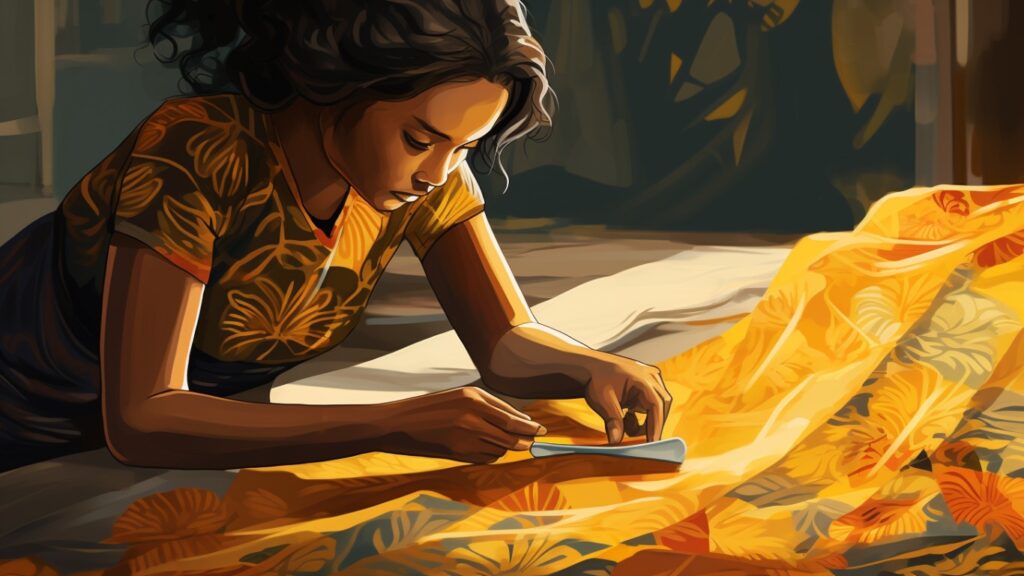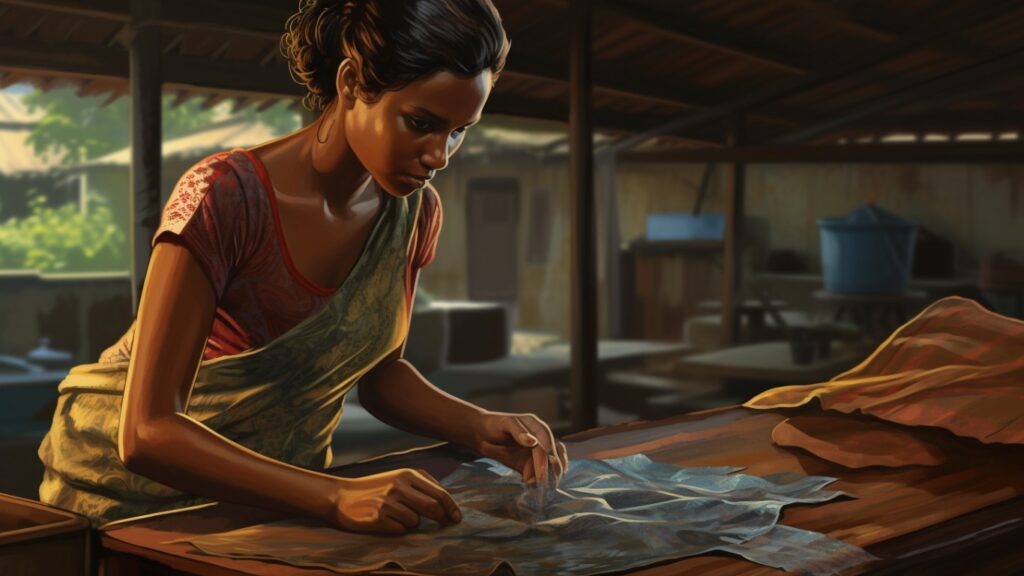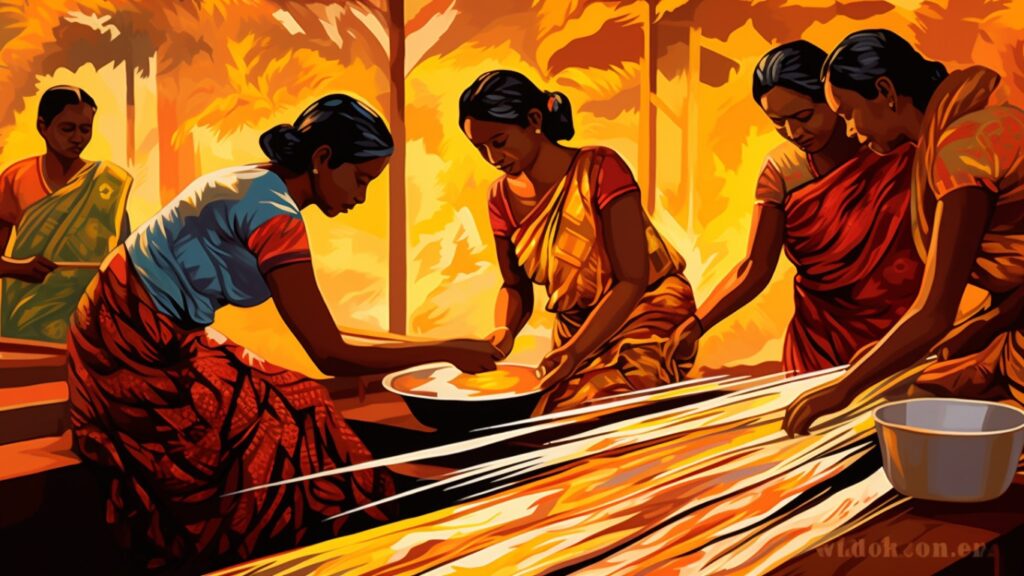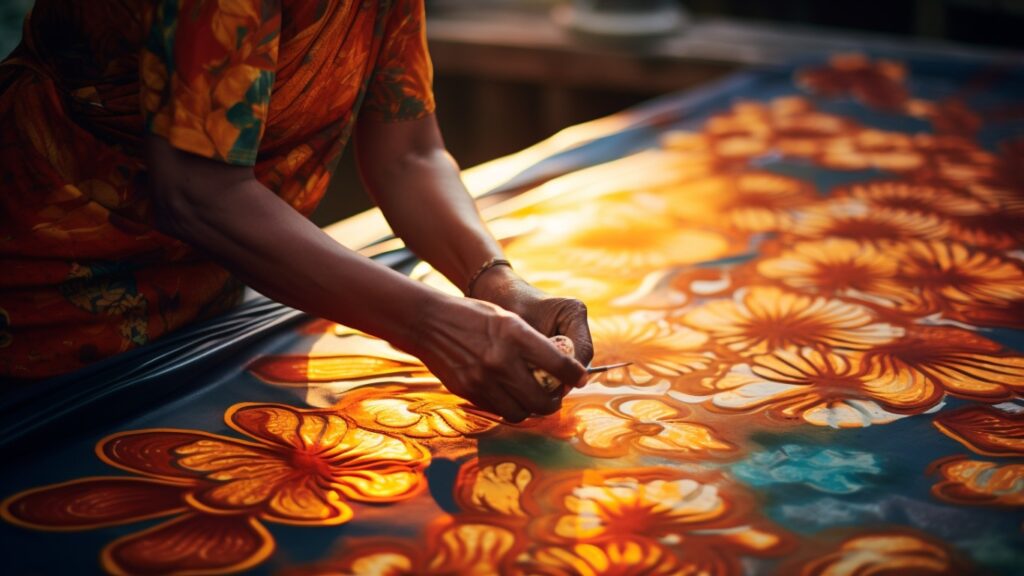Are you a fan of traditional arts and crafts? Then you must have heard about Batik, a unique textile art that originated in Indonesia but has now spread across the globe, including Sri Lanka. Batik is a fascinating craft that involves the use of wax and dyes to create intricate patterns on fabric. In this article, we will take a deep dive into the world of Batik Industry in Sri Lanka and explore its beauty, history, and significance.
What is Batik?

Batik is a textile art that involves using wax and dyes to create patterns on fabric. The wax is used to create a resist, which prevents the dye from penetrating the fabric. This results in a beautiful and intricate pattern that is unique to Batik. The art of Batik has been around for centuries, and it has become an integral part of many cultures, including Sri Lanka.
History of Batik Industry in Sri Lanka

Batik has a rich history in Sri Lanka that dates back to the 18th century. The craft was introduced to the country by the Dutch who colonized Sri Lanka at the time. The Dutch brought with them a number of skilled craftsmen who taught the locals the art of Batik. Over time, Batik became a popular craft in Sri Lanka, and it has now become an integral part of the country’s cultural heritage.
Significance of Batik Industry in Sri Lanka

The Batik Industry in Sri Lanka has significant cultural and economic importance. It provides employment opportunities to thousands of people across the country, particularly in rural areas. Batik is also an important aspect of Sri Lankan culture, and it plays a significant role in the country’s tourism industry. Many tourists visit Sri Lanka to experience the beauty and intricacy of Batik firsthand.
How is Batik Made?

The process of making Batik involves several steps. First, a design is drawn on the fabric using a pencil or a stylus. Next, hot wax is applied to the fabric using a special tool called a tjanting. The wax is used to create a resist, which prevents the dye from penetrating the fabric. Once the wax has dried, the fabric is dipped in dye. This process is repeated several times, with different areas of the fabric being waxed and dyed to create the desired pattern.
Types of Batik in Sri Lanka
There are several types of Batik in Sri Lanka, each with its own unique style and technique. Some of the most popular types include Kandyan Batik, which is characterized by intricate designs and bright colors, and Colombo Batik, which features more modern and abstract designs.
Conclusion
The Batik Industry in Sri Lanka is a fascinating and beautiful craft that has become an integral part of the country’s cultural heritage. Its rich history, intricate designs, and economic importance make it a valuable asset to Sri Lanka’s tourism and textile industries. Whether you’re a fan of traditional arts and crafts or simply appreciate the beauty of unique textile art, Batik is a craft that is definitely worth exploring.
FAQ
What is the origin of Batik?
Batik originated in Indonesia and has been around for centuries.
How is Batik made?
Batik is made using hot wax and dyes to create intricate patterns on fabric.
What is the significance of Batik in Sri Lanka?
Batik is an important aspect of Sri Lankan culture and plays a significant role in the country’s tourism industry.
What are the different types of Batik in Sri Lanka?
There are several types of Batik in Sri Lanka, including Kandyan Batik and Colombo Batik.
